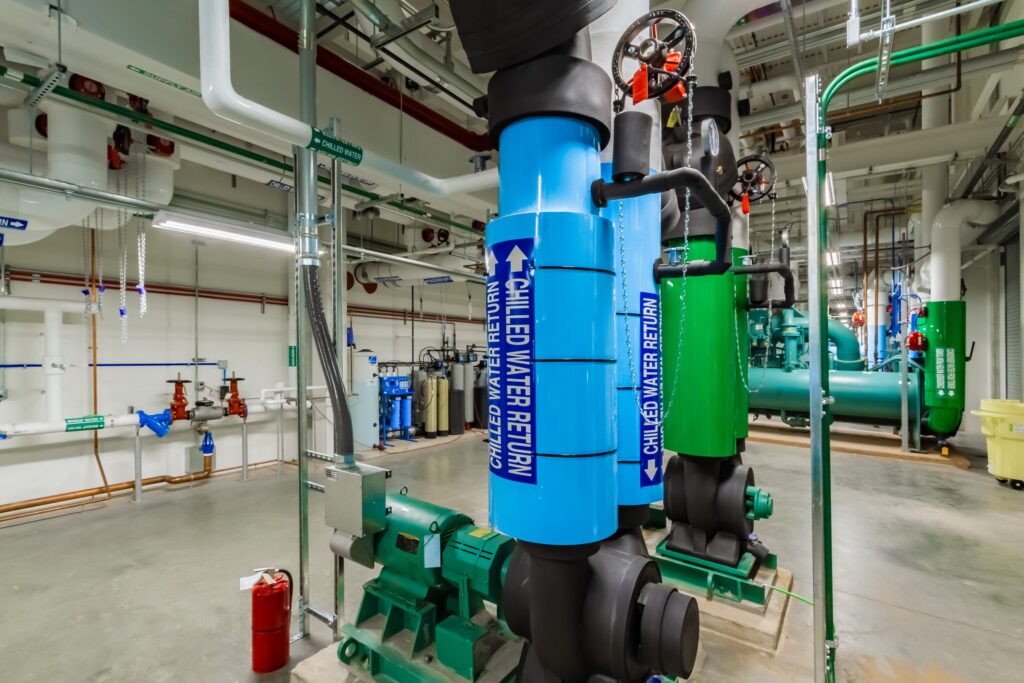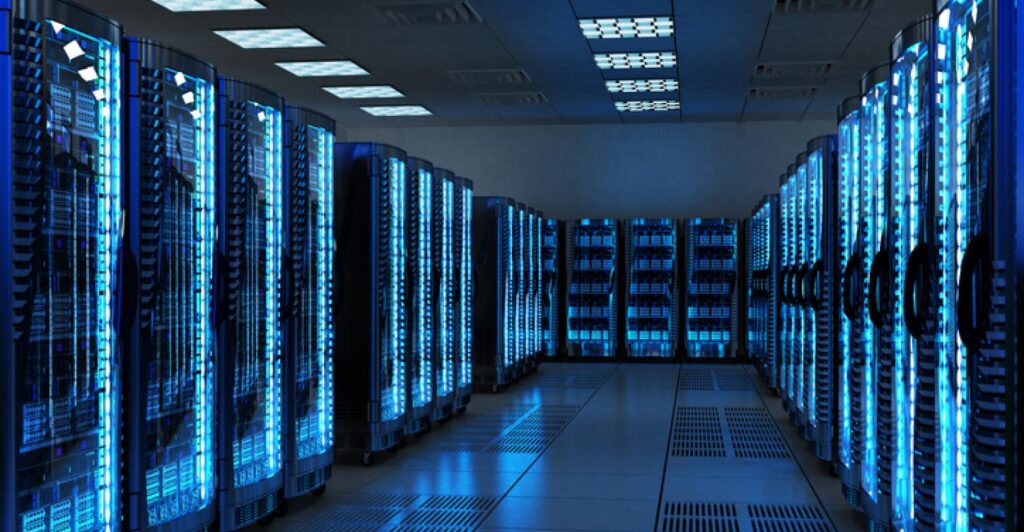Designing data centers requires a reliance on proven solutions from experience, balanced with an understanding of when and where to push the envelope to deliver the best solution to a problem. This balancing act takes place within an industry where tried-and-true products and strategies solve specific conditions, but conditions appear within each project that requires critical thinking to adapt or modify past experiences for a refined design output.
Below are the experiences and considerations I have found to be most important when designing data centers and how to use them for future success:
Technology
The leading facet of mission-critical building design is the direct relationship it has with mechanical, electrical, and plumbing (MEP) systems. As data centers demand the most controlled environments, both mechanically and electrically, the technology to provide the required loads is paramount and highly tuned. In a data center, equipment like generators, chillers, cooling towers, and packaged units are intrinsic to the performance of the building. Due to the building’s intense heating and cooling loads, these pieces of equipment are highly efficient, and most technically advanced in the market. Essentially, the equipment in a data center is a super breed of equipment typically used in a building to support heating/cooling loads. Specific to the integration of these building systems, the mission-critical market is pushing the envelope for what these technologies can output under different criteria and climates, and this is exciting to work on.
For a recent project, applying my understanding of how these technologies work was essential to develop a building massing. The footprint of the equipment needed to power the facility was too big to sprawl horizontally on the ground beside the building, which resulted in needing to find an alternative spot for it vertically. To study and configure this equipment on the roof or within a separate structure, it was imperative to understand the demands of each piece of technology and the impact it could have on adjacent equipment. The generators require a fresh air intake, while exhaust emits horizontally on the other side. Just above the generator plant, the cooling towers emit hot air and moisture upwards. These directional emissions and intakes drive schematic planning of a building and result in preliminary iterations of a solution for a client to review. With the basic understanding of these systems, we could quickly determine the feasibility of design options and narrow down solutions prior to implementing computational fluid dynamic (CFD) analyses limiting CFD iterations, providing cost and schedule benefit. These limited but focused CFD analyses helped us specifically understand how the equipment air movements work with local wind direction and proximity to other existing structures and fine tune design options.
As an architect, being familiar with how the technologies work allows us to guide the team to progress options that offer solutions while satisfying the requirements of the adjacent equipment. Understanding the engineering behind these technologies not only informs the building configuration but allows us to know when to make recommendations, providing a better product in the long run.
Design Trends
Perhaps one of the most exciting aspects of the data center market has been experiencing the changing focus in design as clients evolve in positioning their data center product to appeal to potential customers. We have seen variations of larger enterprise customers requiring specific site criteria that hone in on redundancy and security. On the other hand, we have witnessed co-location customers with a focus on materials and finishes within their spaces that embody their branding or vision. While data center facilities focus on serving computational demand, we are also seeing an increase in designing for user experience in the form of office and assembly space.
In the last five years, I have observed the data center market become more largely influenced by market trends or responses to economic circumstances. Their focus responds to current events, potential corporate acquisitions, technology, and the surge of data-rich applications or services. Whether it is an enterprise or co-location purpose, the trends are real and promote business. Relationships with a variety of clients and their customers have allowed me to see the industry through a wide-angle lens during my tenure in the data center industry.
Through each project, we have been able to enhance our design strategy by holding discovery sessions to quickly extract more feedback from the clients and turn that feedback into ideas. Not only are these ideas used in development, but they also can be utilized in a variety of ways for the architects and clients’ use. A client might prefer a virtual reality experience, physical models, or straight-forward imagery to aid and foster momentum internally with their shareholders. It is exciting that we have been able to convey ideas through all of these mediums, and each entity requires a thoughtful, tailored approach to developing its proprietary design.


